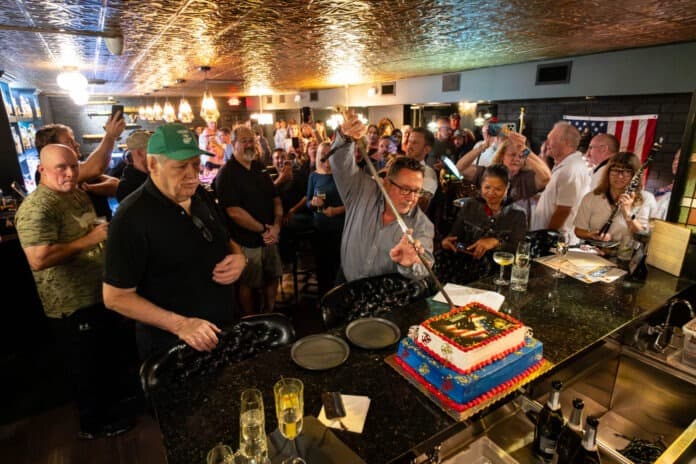New Public Art Installation Enhances Historic Seaport Wayfinding and Heritage
The City of Key West unveiled a major new public artwork at the Historic Seaport plaza at Greene and Elizabeth Streets, the first and largest of four planned installations meant to guide visitors and celebrate the seaport's maritime history. The mixed materials piece by local artists Darcy Ferrill and Shawn Trentlage uses reclaimed wood and metal, and city officials say it reflects broad collaboration and community investment in public space.
Listen to Article
Click play to generate audio

The City of Key West has installed a prominent Art in Public Places work in the Historic Seaport plaza at Greene and Elizabeth Streets, marking the first and largest of four planned art installations intended to act as visual wayfinding and to honor the seaport's maritime past. The piece, created by local artists Darcy Ferrill and Shawn Trentlage, incorporates patinaed copper, rusted steel, stainless steel and aged wood, and integrates boat and marine imagery throughout the composition. Benches and other site features were built with reclaimed Dade County pine donated by a community member, underscoring local contribution to the project.
City and arts leaders have framed the installation as a collaborative effort between municipal boards, artists and community stakeholders. The work is designed to be dynamic and engaging for both residents and visitors, and officials expect it to enhance the seaport plaza as a center for gathering and orientation in a high traffic area of Key West. As the first in a series, the installation sets a visual and programmatic precedent for the three additional works planned to create a coherent system of wayfinding and public art across the seaport.
Beyond aesthetics and navigation, the installation has implications for community health and equity. Public art in shared spaces can contribute to neighborhood identity and social cohesion, which public health research links to improved mental well being and stronger informal social supports. By using reclaimed materials and involving community donors, the project also highlights local stewardship of public space and the potential for small contributions to have visible impact.
The city will need to sustain maintenance, lighting and accessibility to ensure the installation remains safe and welcoming, and to maximize its value for residents who use the plaza daily as well as tourists. Attention to universal design and clear pathways will be important so that the piece functions as wayfinding for all ages and abilities, and so that the health and safety benefits of improved orientation and gathering spaces are realized equitably across the community.
Monroe County residents can expect to see more public art emerge as the seaport plan proceeds, and the city will face decisions about where to site future pieces, how to fund long term upkeep, and how to engage historically underrepresented neighborhoods in future public art initiatives. The new installation at Greene and Elizabeth Streets is a visible step in a municipal arts strategy that connects creative placemaking with local history and civic participation, while raising questions about ongoing investment and equitable access to cultural amenities.


